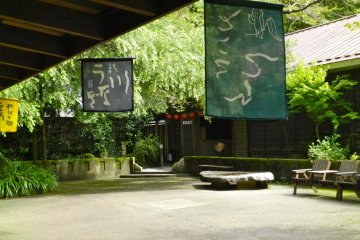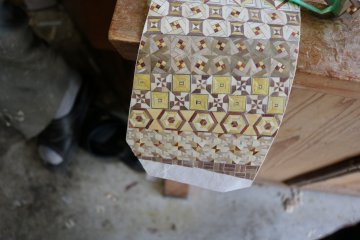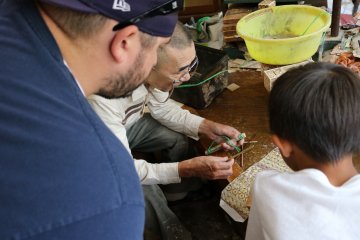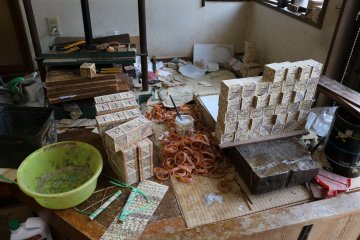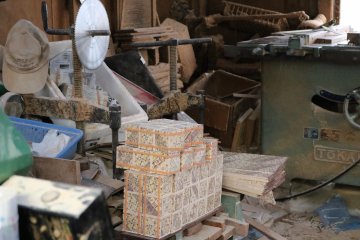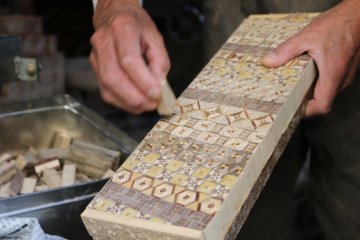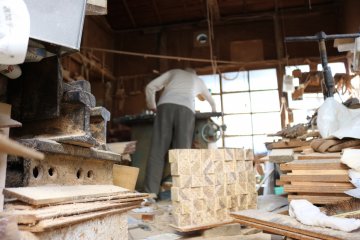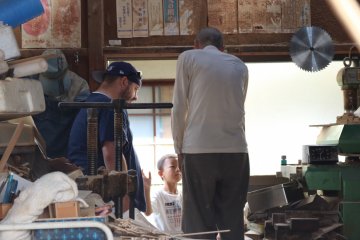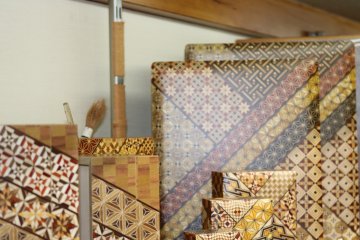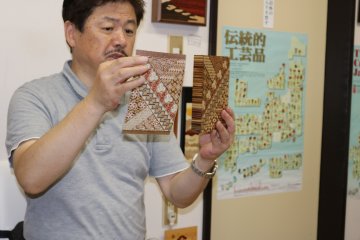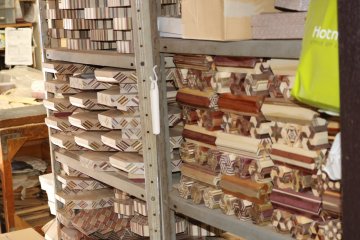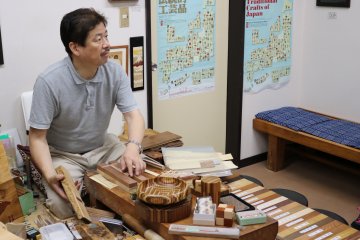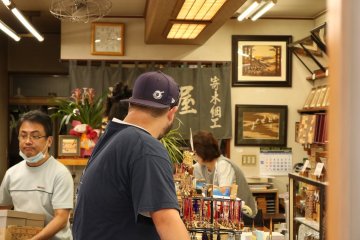Japan is land of the master craftsman and aristisans perfecting their trade. The Japanese continue and refine skills and techniques developed over centuries. Flower arrangement, archery, pottery, landscaping, and woodwork are just some of the examples. Deep in the valleys of the Hakone mountains are the master of Yosegi Zaiku another craft and skill to be discovered. Yosegi zaiku is a wonderful example of a Japanese trade still being honed to this day.
Yosegi Zaiku is the name for a traditional Japanese woodcraft technique that makes intricate and complicated geometrical designs using the wood from an eclectic assortment of trees found in the Hakone mountains. Yosegi Zaiku has a history of running back more than 200 years and can find its roots in the late Edo period when many other artistic forms were being supported and gaining popularity. Other classic Japanese art forms like ukiyo-e (woodblock printing) and kabuki (Japanese theater) also gained popularity with the Japanese general population around this time.
The story told is that more than 200 years ago, in the late Edo period, a man named Nihei Ishikawa started refining the woodcraft techniques that would become Yosegi Zaiku. He used the natural resources of the area to make wonderful and distinct objects to sell to the travelers along the Old Tokaido Road. The Old Tokaido Road was the main route between Edo (Tokyo) and Kyoto. This road was one of the most famous and heavily used routes in Japan and ran right through the mountain village of Hatajuku. Even today Nihei Ishikawa's descendants still run shops in his village of Hatajuku.
In the forested mountains of Hakone that is the small village of Hatajuku. The workers and craftsmen of the town have used the surrounding natural beauty as inspiration and a resource to create the beautiful wood working technique known as Hakone Yosegi Zaiku.
Hakone Yosegi Zaiku can be described as inlaid wood artistry. No dyes or stains are used, rather the artisans choose from the many different types of trees in the area to create different colors and textures in their art. There are over 22 different types of wood used by these artisans; ash, rosewood, walnut, and more. The Hakone Yosegi Zaiku are characterized by their intricate and complex geometric patterns made from bonding and cutting different types of wood together. The geometric patterns have names such as; Kuroasa (Black Hemp), Kikkou (Turtle Shell), and Mawariyabane (Spinning Arrow Fletching).
The process can take days and even weeks to cut, fit, and carve pieces of yosegi art. The thin strips of wood are bonded together to make a large block of natural beauty made up of many different shades and colors. This block is sometimes shaved into thin layers to provide a beautiful sheet of designed wood. These thin sheets are layered over different products and wood crafts. The more expensive products will take entire blocks of bonded wood and be carved to make single bowls, cups, and more.
There are workshops and even factory tours available to visitors to the Hakone area. The village of Hatajuku is located between Lake Ashi and Hakone Yumoto. It is the center of this craft. There is a high concentration of shops, factories, and craftsmen in the area and can be reached by bus. The Hakone Zaiku boxes and products are sold throughout the area and can even be ordered online.
The process of Yosegi-Zaiku has been registered as an important cultural heritage craft by the Japanese government since 1984 and the name can only be used for the products made in the Hakone area.



